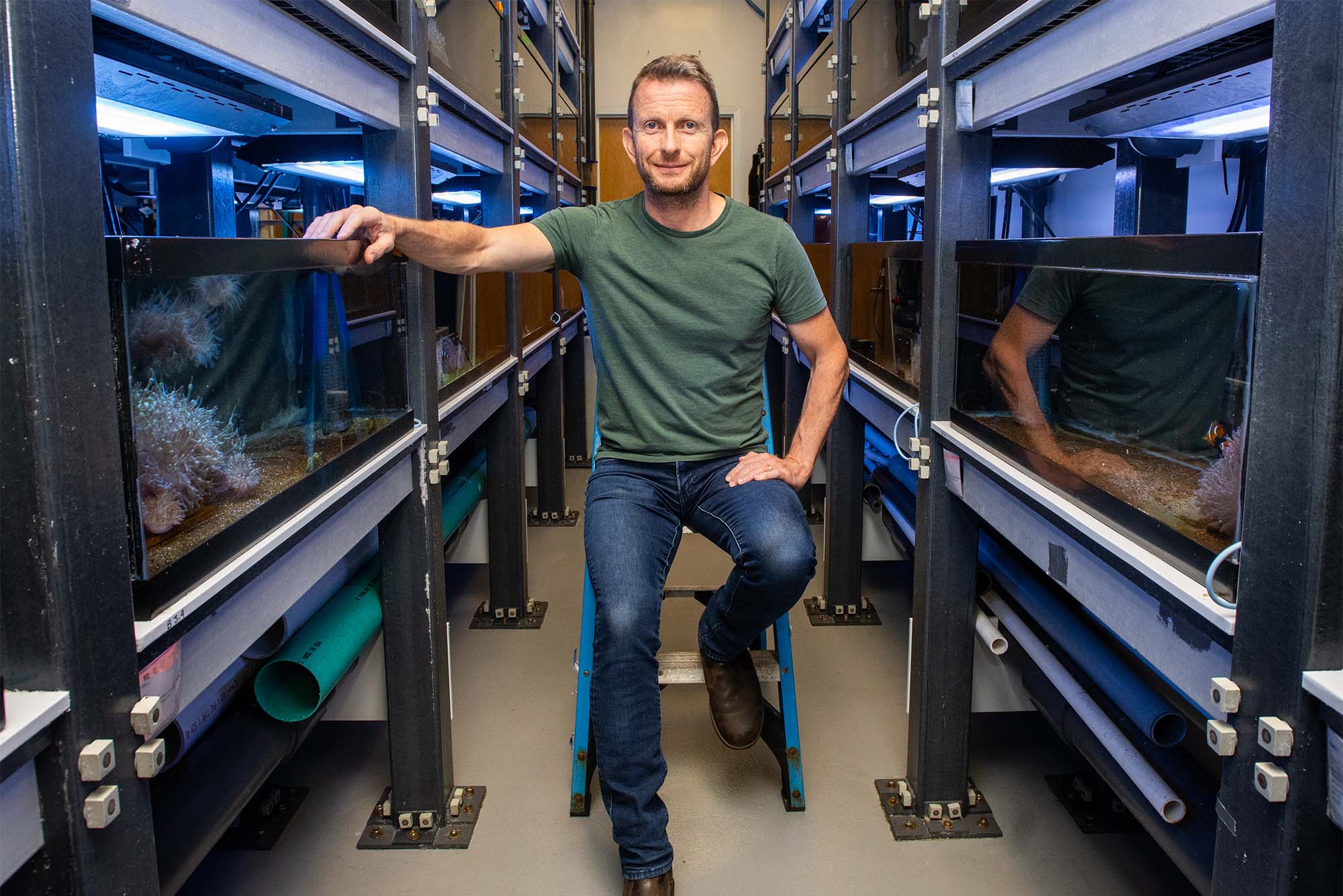Congratulations to Dr. Peter Buston for his feature in the Brink article called “The Complex Lives of Clownfish”. After studying clownfish for two decades, and has housed hundreds of these fish in his Marine Evolutionary Ecology lab, Buston put together an analysis on clownfishes’ unique behaviors.
In the beginning, all clownfish are born male, with the capacity to change gender later in life. Once the female of a group dies, the next largest in the group changes gender from male to female, and becomes the new leader. The smaller fish all move up one spot in the social ladder, waiting their turn until they’re next in line to mate.
Dr. Buston described to the Brink:
“Their behaviors can be quite complex,” says Buston, who has studied clownfish behavior both in the lab and in the wild. And clownfish and anemones have a quintessential symbiotic relationship. In the ocean, sea anemones trap food with stinging cells on their tentacles that paralyze their prey. Clownfish, though, secrete a mucus that shields them from the stings. The bright-colored clownfish attract predator fish to the anemone, which then stings and eats the fish. And in return, the anemone provides a safe, protected environment for the clownfish.
To make matters more complicated, Buston and his team have found that clownfish can control their growth depending on the specific social context—so two rival males put together will race to get bigger and become dominant. The team is currently investigating the genetic mechanisms that allow the fish to do this. They’ve also learned how to introduce baby clownfish to new social groups in different-size anemones and created more than 10 social groups in the lab—with aims to create more soon.
Click here to read the full article.
